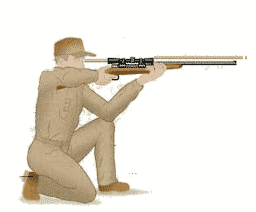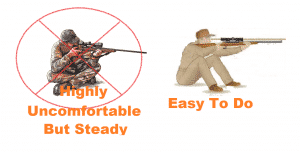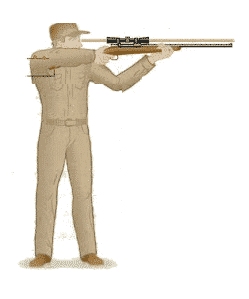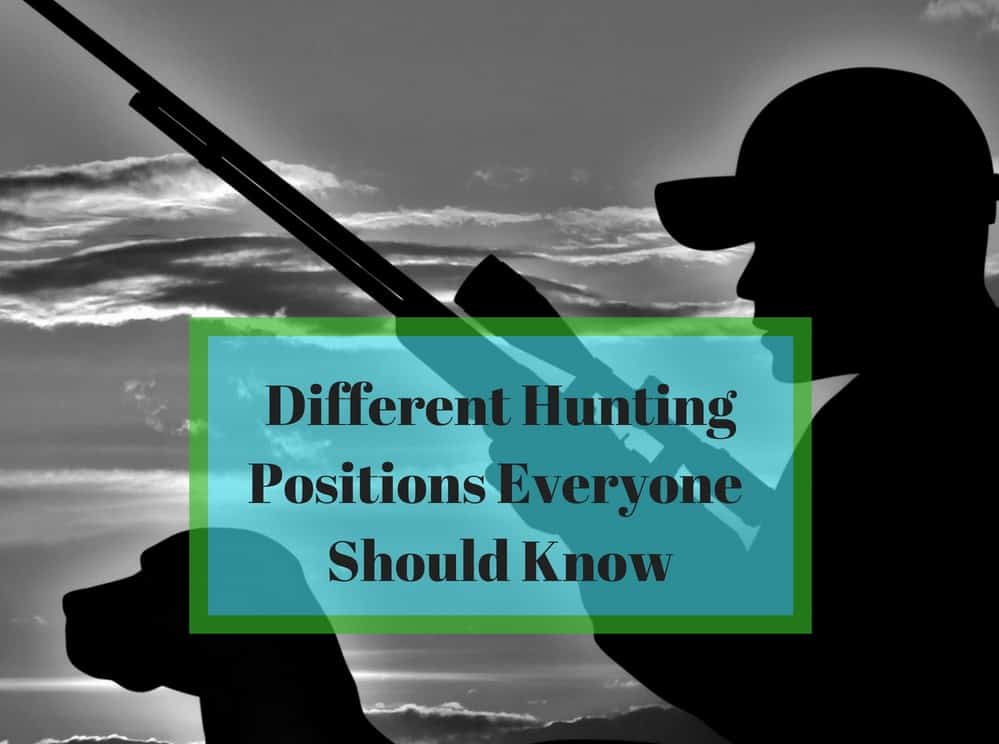Year after year poor shooting accounts for a huge number of locally shot deer. Poor shooting can work with a shotgun at close range(deer are big animals), but it can be tough to get off shots out to a distance. Unless you want to continue taking your close range shots you should take some advice from competitive shooters. With a few of these tips you can turn your body into an effective shooting machine.
What are The Best Deer Hunting Positions
There are a ton of great shooting aides on the market today that can help you get off your shot. Look at all the monopods, tripods, sandbags and gun cradles that hit the market every year. I’ve definitely got my money and then some out of my Caldwell Deadshot FieldPod , but sometimes you aren’t going to have enough time to properly setup your tripod to get off a shot. These are the times that it’s great to know a few basic shooting positions.
In order of steadiness the four NRA competition shooting positions are prone, sitting, kneeling and standing. When you get closer to the ground you spread your weight reducing movement in the rest of your body. These four basic positions are a great place to start, but just because a position is steady doesn’t mean it works well for hunting.
Shooting From The Kneeling Positions
 Personally whenever I’m hunting from the ground I will typically be using the kneeling position. I think it offers just enough stability and allows you to quickly get down into position. The only times that I’m not going to kneel down is if I plan on staying for a while, or I’m afraid to spook the deer. It’s my go to position whenever I’m hunting squirrels, hogs, turkey and anything else I hunt from the ground.
Personally whenever I’m hunting from the ground I will typically be using the kneeling position. I think it offers just enough stability and allows you to quickly get down into position. The only times that I’m not going to kneel down is if I plan on staying for a while, or I’m afraid to spook the deer. It’s my go to position whenever I’m hunting squirrels, hogs, turkey and anything else I hunt from the ground.
To properly get into the kneeling position you need to keep your back straight and head up. Keep about half of your weight on your back heel and forward shin almost vertical. Your position should feel sturdy and properly balanced. If you have a hard time getting into position at home you won’t be able to rely on it in the field.
Kneeling with a Shooting Stick
Whenever I plan to hunt from the ground I’ll bring along a basic hunting monopod like this Primos Trigger stick. Unlike my favorite Caldwell Deadshot Fieldpod the Primos Trigger Stick can be set up almost instantly. Monopods are lightweight and will significantly reduce your movement from the kneeling position.
Shooting From The Sitting Position
 Whenever I plan on hunting from one position for a while I’ll typically set up in a sitting position. The sitting position that most people recommend is with your legs crossed and body leaning over resting your elbows on your knees. Supposedly the position is extremely accurate, but I feel more like a twisted pretzel.
Whenever I plan on hunting from one position for a while I’ll typically set up in a sitting position. The sitting position that most people recommend is with your legs crossed and body leaning over resting your elbows on your knees. Supposedly the position is extremely accurate, but I feel more like a twisted pretzel.
The position that I like to get into uses a slight bend at the knees and allows you to quickly get centered. Just comfortably sit on your bottom with your body leaning into your knees. Bring your head forward comfortably centered to the rifle. Dig in your heels and stabilize your elbows using your knees. Again this is the perfect position to use a shooting tripod like the Caldwell Deadshot Fieldpod.
When done properly your sites should be in the perfect position and you should feel pretty comfortable. Most of the weight should be rested on your body and not held by your hands and arms. Under recoil your rifle should push straight back as opposed to a slight angle.
Offhand or Standing Position
 The offhand or standing position is by far the least steady, but it’s often the only option. When out hunting shooting from a standing position should be your last resort. Only shoot from a standing position when going into a kneel might give away your position.
The offhand or standing position is by far the least steady, but it’s often the only option. When out hunting shooting from a standing position should be your last resort. Only shoot from a standing position when going into a kneel might give away your position.
Since standing is the most difficult position to shoot from you should try and avoid it like the plague. Sometimes there’s just no other option available when you have to avoid vegetation, fallen debris or your target is just too close to move.
Even though shooting from the offhand position is the most unsteady you can effectively hit your target with the right technique. Make sure you hold your back straight with the butt of your rifle high up in your shoulder.Keep your rear elbow back and held horizontal with your forward elbow up underneath the rifle. Your eyes should be centered on the scope and looking straight ahead. Your position should feel sturdy and relatively comfortable.
Prone Position
There’s a reason that you always see sniper shooting from the prone position that’s because it’s easily the steadiest position you can shoot from. Simply lying down behind your rifle removes all accidental movements and allows your body to feel grounded. If you can’t shoot for the prone position you should probably get a new hobby.
So if shooting from the prone position is so stable why don’t I typically recommend it? It is very difficult to find a situation to shoot from the prone position in the field. It’s uncomfortable for extended periods of time and just doesn’t work in most hunting situations. It’s hard to find a clear shot without any brush, vegetation, rocks or mud getting into your way.
Shooting from the prone position might not work as good in the field as it does in the range, but there are a few times that it works extremely well. Whenever I need to hit a long distance target I go into the prone position. I’ll typically bring it out every time I go prairie dog hunting or shooting night time coyotes in my backyard.
Build a Solid Base
You’re going to want to build a base using the most bone as possible. The less you need to depend on muscles the better.
- While Sitting: If you’re sitting form a tripod using your shins and tailbone locking your elbows to hold the rifle.
- Kneeling: keep your spine and forward shin completely vertical allowing half of your weight to fall on your other knee. The stronger your kneeling position the better your sight picture.
- Standing: Stand straight with your weight balanced evenly on your legs. Keep your feet shoulder width apart and pull the rifle firmly into your shoulder. Try and take as much weight out of your arms as possible.
Practice Your Positions
Make sure you practice your positions regularly. Start by developing a sturdy position that you can easily duplicate in the field. If you have a hard time getting into it in your living room you’ll probably have a hard time with all your gear. Your body needs to be able to naturally fall into position and stay there comfortably. You never know how long you’re going to have to hold your position before you can get off a shot.
Even with solid bone support and the right technique your muscles will probably be sore. Repeatedly returning to the position will strengthen your muscles and reduce your rifle shakes.
Learn to use a shooting sling to further stabilize your muscles allow you to quickly get into position. You might also want to practice using shooting sticks and a bipod if you’re going to bring them along with you into the field. You don’t have to wait for good weather to come along practicing in your living room will give you the right body mechanics. Getting into position and dry firing 20 shots over the course of a few weeks will strengthen your muscles and give you the muscle memory needed to comfortably get into position.
Find Your Natural Point of Aim
Don’t fight your body try and find your natural point of aim. This is the position where your rifle naturally goes when you bring it up to your shoulder. Move your body to bring the target in front of your rifle rather than force the rifle off center. Forcing a hold causes your muscles to work more than they need to. With a little bit of practice you should learn how to bring your body to the target rather than relying on your arms to do all the work.
Keep Your Eyes Centered
Try and keep your eyes front and center so that you can look straight through the scope without straining. If you feel uncomfortable behind your scope you don’t have the proper fit. You’re either going to want to adjust your shoulder position or the location of your scope.

